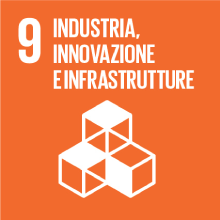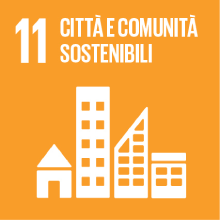RESEARCH METHODS FOR ARCHAEOLOGY
- Anno accademico
- 2019/2020 Programmi anni precedenti
- Titolo corso in inglese
- RESEARCH METHODS FOR ARCHAEOLOGY
- Codice insegnamento
- CM0513 (AF:281955 AR:165976)
- Lingua di insegnamento
- Inglese
- Modalità
- In presenza
- Crediti formativi universitari
- 6
- Livello laurea
- Laurea magistrale (DM270)
- Settore scientifico disciplinare
- L-ANT/10
- Periodo
- I Semestre
- Anno corso
- 2
- Sede
- VENEZIA
- Spazio Moodle
- Link allo spazio del corso
Inquadramento dell'insegnamento nel percorso del corso di studio
This course aims to introduce a wide range of skills used by archaeologists. It concentrates on how the skills and methods intersect with heuristic questions, on the one hand, and with data on the other. Methods are discussed within theoretical frameworks and also within practical applications. The technologies available to archaeologists very much channel what can be said about the past. The methods will be discussed in general terms and will also be shown working in specific sites and projects, mostly in the Venetian Area.
This course offers students to the basic skills and background necessary to do many kinds of field recording and excavation, including laying out units, digging, mapping, site sampling, research design, artifact identification, curation, and artifact conservation. Labs focus on learning to use basic archeological field equipment ( i.e. total station mapping, and field and lab
artifact identification tools).
Risultati di apprendimento attesi
The course will provide a theoretical basis on methodological aspects and good practices in archaeology (archaeological excavation, landscape archaeology, archaeological heritage management, archaeology versus archaeometry, lab approaches, and study of archaeological materials).
The course will have a general approach, but it will present samples and site cases related to the Mediterranean archaeology.
The program is designed for Cultural Heritage scientists: it will offer a quite solid theoretical basis to understand and interpret the archaeological discipline and have a productive exchange with archaeologists. It will provide specific tools to develop interdisciplinary research both in archaeometry and in the field of archaeological Cultural Heritage management.
Course Objectives:
1) Basic field archeology skills, including laying out and excavating archeological units, drawing unit and feature plan views and profiles.
2) To develop skills regarding the appropriate use of archeological field equipment, including shovels, trowels, plumb bobs, and line levels.
3) To develop the ability to set up and use a digital total station to map an archeological site.
4) To develop the ability to identify various kinds of artifacts and locate and map archeological sites based on artifact distributions.
5) To develop basic lab skills related to field archeology, including basic conservation, and artifact identification and cataloging.
6) To develop the ability to design an archeological field project, including making decisions regarding budgeting, hiring, and project logistics.
7) To learn to think critically about archeological field decisions and the process of site interpretation.
Prerequisiti
- English B2
- General knowledge about Cultural Heritage
- There are no specific requirements related to the archaeological field.
Contenuti
1, Introduction and scheduling
Introduction to the Course. Presentation of the students and of the teacher. Requirements. Orientation on the moodle materials. Definition of "Archaeological Methods".
2, History of Archaeological Practice
The emergence and development of archaeology as a field method. The emergence of analytical techniques. Types of data and forms of data collection. Archaeology as destruction. Conservation and preservation issues. Ethical issues. Approaches to project design.
History of archaeology. Theory and archaeological methods. Principles of Ethics in Archaeology.Archaeology and History of the Materiality. Archaeology and Conservation: a historic overview.
3 Seminar, Approdi Project. Torcello Abitata 2018. Seminar Series. "Archeologia Partecipata" and Torcello Site Visit
Seminar of Public Archaeology "Narrare le Origini di Venezia con Terra, Acqua,Fango e Schiavi. Archeologia Partecipata, Restauro e Cuminità", Seminar at Torcello Excavation Sitewith A. Di Mauro, S. Magro, D. Calaon, E. Zendri
4-5, Finding and mapping sites I and Finding and mapping sites II
Approaches to landscape. Field survey. Sampling methods. Aerial photography. Geophysical prospection. GIS applications in archaeology.
I: Landscape Archaeology. Theory of Landscape. Landscapes as Archaeological Object. Processualism and Post-Processualism. Site and Significance. Type of Site.
II; Survey methods. Aereo-photography and Archaeology. Lidar and archaeology. Remote Sensing inArchaeology. GIS and Archaeology.
6-7 Laboratory Activities, Fieldwork, San Giovanni Evangelista.
Medieval Monastic Church of San Giovanni Evangelista in Torcello (excavation of 1961):
I: Archaeology and Conservation issues. Introduction. Survey. Total Station measurements.
II: Drone photogrammetry. 3d Photoscan techniques. Sampling Methods. Total station and survey sketches.
8, Excavation Methods, Stratigraphy, Harris matrix
I: Introduction to geological stratigraphy. Archaeological stratigraphy. Harris Matrix concepts
9 Laboratory Activities, San Giovanni Evangelista: From Survey to the Map.
Photogrammetry tools. Photoscan. Autocad and 3d. GIS and 3d. Exercise on San Giovanni Site.
10-11, Excavation Methods, Stratigraphy, Harris matrix II and III Introduction to geological stratigraphy. Archaeological stratigraphy. Harris Matrix concepts
II: Harris matrix realizations. Techniques and issues. Ideas of Residuality, Absolute dates.
III: From theory to practice: Building up a Harris Matrix for a complex site.
12, Ancient technologies I. Ceramic analysis. Archaeometry and archaeological chemistry. Craft production.
Ceramic and archaeometry. Ceramic production. Conservation Issues on archaeological ceramics.
13, Ancient technologies II. Archaeological Finds: Technology, Trade, Use and exchange
Metal, Glass, Bone artifacts. Technologies and trade. Use and exchanges. Artifacts distributions and theory.
14, Ruins or Remains of the Past? An Anthro-Archaeological Point of View between Politics, Identity, and Memory
Archaeological Ruins. Definitions. Conservation and Restoration issues. Case studies. Theory of conservation
15, Monuments, Memory and Archaeology
Monuments and Archaeology. Memory and preservation. Landscapes as Monuments.
16, Laboratory 1. Hours 32-38. Archaeology in Practice: A National Museum and its Conservation laboratory
17, Students' Presentation on additional materials, I, II, III and IV
18-19, Dating methods and Chronology I and II
I: Relative daring techniques and methods. Stratigraphy. Seriations. Typological sequences. Flourine. Pollen dating.
II: Tree rings dating. C14 and its issues. Thermolumiscence.
Testi di riferimento
In addition to the textbook, other reading material will be available on pdf (moodle). The following books are also recommended because they will be useful throughout your archaeological studies:
• Hodder, I. 1999. The Archaeological Process. Blackwell.
• Sharer R. and Ashmore W. 2002. Archaeology: Discovering our past. Mayfield.
• Banning, E.B. 2000. The Archaeologist’s Laboratory. The Analysis of Archaeological Data. Kluwer/Plenum.
• Brothwell, D.R. and A.M. Pollard 2001. Handbook of Archaeological Sciences. New York: John Wiley (CC75.H34 2001)
• Pearsall, Deborah M., 2000, Paleoethnobotany: A Handbook of Procedures. Academic Press, San Diego.
• Reitz, Elizabeth J., and Elizabeth S. Wing, 2008 (2nd Edition), Zooarchaeology. Cambridge University Press, Cambridge.
• Rice, Prudence M., 2006, Pottery Analysis: A Sourcebook. The University of Chicago Press, Chicago.
Modalità di verifica dell'apprendimento
Assignments and grading:
• 30% class and participation;
• 30% In-class presentation (powerpoint or oral presentation, further instructions will be discussed in class);
• 40% Final examination (oral interview).
The students that can not be present at all the lesson may have to prepare additional material for the final examination.
Modalità di esame
Metodi didattici
The course includes Lessons, Laboratory Activities / Field Works, and a Seminar.
The Lessons (32 hours) will entail a series of educational activity:
- taught lesson lectures;
- group discussions;
- quizzes (using kahoot.com);
- student presentations.
The Lab Activities will be held at Torcello site (Noth Lagoon), where the student will develop a conservation project for the Monastery of San Giovanni Evangelista (11th cent.), in collaboration with prof. E. Zendri (SCIENTIFIC STRATEGIES FOR THE RESTORATION AND CONSERVATION OF CULTURAL HERITAGE [CM0514]).
A lab activity will be held at the National Archaeological Museum of Este (Padova), where the students will visit the museum, the museum warehouse, and they will have a unique introduction/experience to the restoration lab of the museum.
The Seminar will take place on Torcello island, and it will offer the opportunity to meet the Local Superintence officers.
Altre informazioni
The National Archaeological Museum of Este will be reached by train. The entrance is free for the course's students. This lab activity - that will require the purchase of the train ticket - is not mandatory.
For further information, please contact calaon@unive.it
Obiettivi Agenda 2030 per lo sviluppo sostenibile
Questo insegnamento tratta argomenti connessi alla macroarea "Città, infrastrutture e capitale sociale" e concorre alla realizzazione dei relativi obiettivi ONU dell'Agenda 2030 per lo Sviluppo Sostenibile


